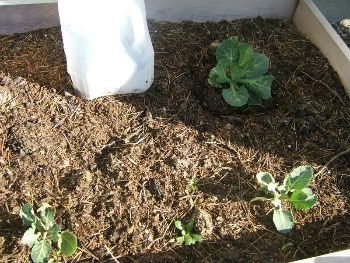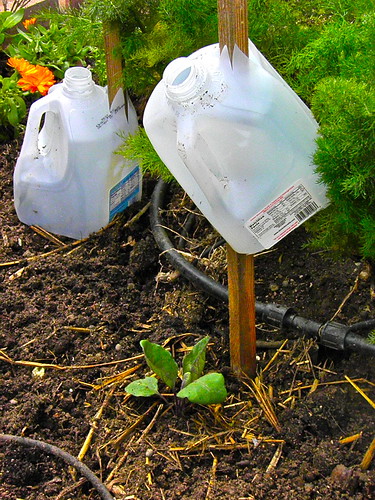Part of learning is going back and realizing mistakes that you unwittingly made. While browsing last spring's seedling pictures, I saw these:
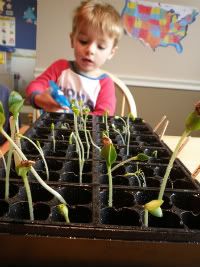
and realized that those tall spindly looking teenager plants are not necessarily the sign of the healthiest plants possible. They show classic symptoms of being LEGGY, and I don't mean they have beautiful gams. (my other 'mistake' was starting from seed several plants that would probably have done better being directly seeded outside during planting time--but I think that the kids really enjoyed seeing the different types of babies, so we'll let that one slide  ). Leggy seedlings are tall, thin-stemmed, and sometimes bent over.
). Leggy seedlings are tall, thin-stemmed, and sometimes bent over.
Why Do Seedlings Become Leggy?
Seedlings start seeking light as soon as they pop out of the soil. Very eager to soak up that light so that they will survive, they lean and bend toward the light source. If the light is dim, they will start to grow tall and spindly in their efforts to reach up. What they sacrifice with height is stem width. Long, skinny stems will not do as well holding up to the conditions outside, and your plant will not be as healthy and strong as it needs to be to combat pests and diseases, wind, rain, and all of nature's other challenges.
What Can Be Done To Prevent Legginess?
One of the best ways to grow seedlings indoors is to use a 'growlight'. Here is an example of a growlight setup. You can make one yourself, using a florescent light that has both a 'hot' and 'cold' bulb, and building a mechanism which raises the light up as the seedlings grow.
Here's my problem, though...i don't have a growlight setup and I don't plan to make one this year...if ever! If you've got the resources to make one, I say go for it. I am being stubborn and would like to try my luck at windowsill seedlings. After all, what did gardeners do if they wanted to start seeds before they had electricity? Maybe that's a stretch, but it's never far from my mind that if I ever needed to survive without electricity, I could. So knowing how to grow strong seedlings without extra gadgets or power can't do any harm. I'm not saying never, and maybe as I get really into this gardening thing, I'll try fashioning a growlight. But for now, it's good old fashioned sunlight for the Little Hands Garden!
Helping Your Seedlings When you Don't Have Growlights
Here are some tips I found from various sources while browsing the web and gardening books:
1. Place your seedlings in a south facing window.

*make sure your indoor animals are either kept out of the room, or watched carefully. They adore knocking over fragile, precarious-looking objects from sunny windows. Although...this furry love is not looking very threatening.

2. Turn your seedlings daily so that they are not 'reaching' toward the sun in the same direction every day.
3. Try to urge seedlings that are too tall to grow thicker by brushing your hands over them a few times a day or placing an oscillating fan to blow gently on them for a few hours every day. This tricks the plant into thinking that it is growing in a windy environment and releases chemicals in the plant to grow thicker stems to be better able to withstand the supposed windy environment.

4. Keep your seedlings happily watered! Keep their soil damp, misting them once or twice a day (I have found that being in a south facing window warms their soil considerably, and I mist them twice a day). You don't want soaking wet soil, just damp and airy. If you let seedlings go dry, they will put effort into survival and you'll lose potential growth and strength. Baby the seedlings for now, and save the toughening up for later, when you harden them off.
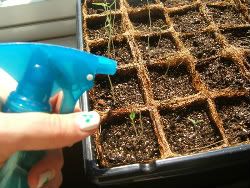
With these tips in mind, come back soon to see how our seedlings have done! In this mini greenhouse we have 3 types of tomatoes: Brandywine, Yellow Pear, and Super Sweet 100 Hybrid. We also have 3 types of marigolds: Jaguar, Lemon Drop, and French Dwarf. The marigolds will be our superheros in the garden when they help us deter pests!
The rest of our veggie seeds are patiently waiting for warmer weather in order to be planted directly into the garden!


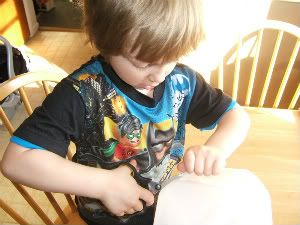


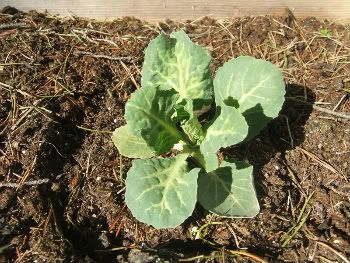
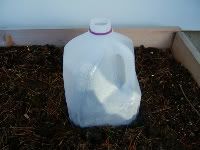

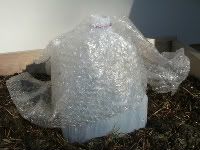 For good measure, Simon taped some bubble wrap around it.
For good measure, Simon taped some bubble wrap around it.